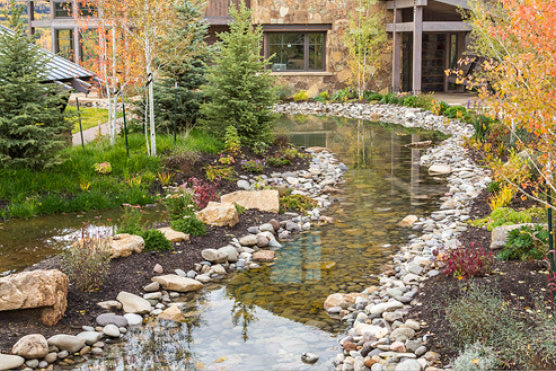
Muck Isn't That Big Of A Deal, Is It?

Pond muck or sludge is a buildup of blackish, smelly, tar-like goop found at the bottom of many lakes and ponds. It is mostly organic matter, but it's gross. Most of it is actually made up of fish waste and decaying plant matter which sounds perfectly logical, considering it's at the bottom of a pond. But if you've ever stepped in some, leaving it there is anything but.
You can do a few things to minimize muck accumulation. Be sure your fish population is appropriate for the size of the pond. Decaying plant matter is another contributor to sludge, so keep the grass clippings out and make a regular effort to remove dead leaves and branches as well.
Quality aeration is another key factor in reducing a sludge bed. Your pond is alive, but it can't breath without help. A few well-placed diffusers can maintain the proper level of Dissolved Oxygen (DO) in your water and also keep it mixing. This keeps the water fresh because without enough oxygen, the bacteria in your pond water will slow or stop consuming the waste they degrade (and begin to function anaerobically). This leads to a hydrogen sulfide gas smell which is not pleasing.
There are three main problems that can come from allowing muck to build up on the bottom of your pond: foul odors, decreased water depth, and excess nutrients that encourage algae growth.
Foul Odors - Foul smelling sludge will make any pond undesirable to be around. Plus if you have a beach or cove and your family or pets swim in the pond, it’s a mess. Not only is it hard to get off skin and fur, it stinks. If left to long, that odor might make you feel like your pond is more hassle than it’s worth.
Sludge Depth - This varies dramatically from pond to pond, but if you don't check it, you'll never know if you have a problem brewing. Too much muck makes the water hard for you to manage and ages it in just a few short seasons. When your sludge isn't regulated, your pond gets shallow which can create problems for pond life as well. Shallow bodies of water are much more difficult to aerate properly, so your DO can be too low which puts stress on fish and other desirable wildlife.
Excess Nutrients - Your sludge layer is rich in nitrogen and phosphorous which provide essential nutrition to all plant life. That sounds positive until there is too much sludge. Then algal blooms occur which de-oxygenate the water and make your pond less suitable for animal life. Plus, these nutrients tend to stimulate the growth of aquatic plants which often tend to grow out of control. At some point, the algae in your pond will die and fall to the bottom. This dead organic matter decomposes and adds to the sludge layer. The cycle continues to “feed” itself as more nutrients are now available to the stimulate algae growth.
If you want your pond or water feature to remain a focal point to be proud of in your outdoor living space, minimize sludge buildup the natural way by using a combination of enzymes, bacteria, and trace minerals for sludge and muck reduction.
The combination of these natural technologies safely accelerates the natural decay of the muck on your pond bottom. The best aeration system you can get starts at the bottom of the pond so it can mix and aerate pond water energy-efficiently. Next you'll need to choose enzymes, bacteria, and trace minerals that are gentle to the environment and safe for people, pets, and plants. Enriching pond water with these additives is the best way to keep your pond healthy.